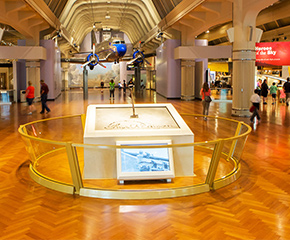Moravian Bee Skep, 1850-1900
Add to SetSummary
The Moravia colony of Bethabera, North Carolina, sold a bee skep for 10 shillings in 1762. That skep likely consisted of rye straw (a long and durable grain straw), coiled into a hollow vessel, bound with ash or hickory splint. Bees entered through the M-shaped opening and made comb in irregular shapes within the structure from which beekeepers harvested honey and bee wax.
The Moravia colony of Bethabera, North Carolina, sold a bee skep for 10 shillings in 1762. That skep likely consisted of rye straw (a long and durable grain straw), coiled into a hollow vessel, bound with ash or hickory splint. Bees entered through the M-shaped opening and made comb in irregular shapes within the structure from which beekeepers harvested honey and bee wax.
Artifact
Bee skep
Location
Not on exhibit to the public.
Object ID
29.611.2
Credit
From the Collections of The Henry Ford.
Material
Hickory (Wood)
Straw (Plant material)
Color
Brown
Dimensions
Height: 17 in
Diameter: 15 in





